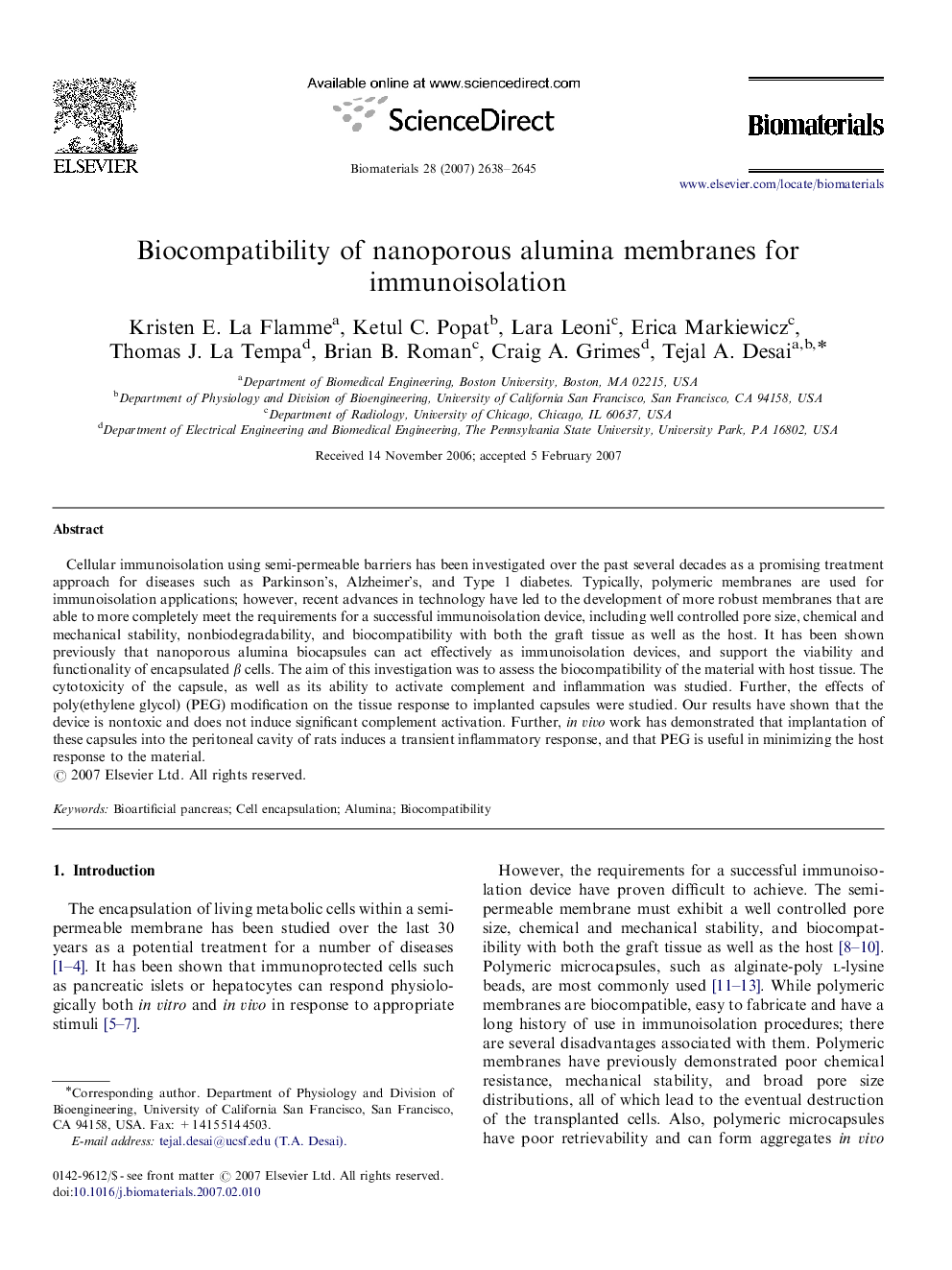| کد مقاله | کد نشریه | سال انتشار | مقاله انگلیسی | نسخه تمام متن |
|---|---|---|---|---|
| 10073 | 662 | 2007 | 8 صفحه PDF | دانلود رایگان |

Cellular immunoisolation using semi-permeable barriers has been investigated over the past several decades as a promising treatment approach for diseases such as Parkinson's, Alzheimer's, and Type 1 diabetes. Typically, polymeric membranes are used for immunoisolation applications; however, recent advances in technology have led to the development of more robust membranes that are able to more completely meet the requirements for a successful immunoisolation device, including well controlled pore size, chemical and mechanical stability, nonbiodegradability, and biocompatibility with both the graft tissue as well as the host. It has been shown previously that nanoporous alumina biocapsules can act effectively as immunoisolation devices, and support the viability and functionality of encapsulated β cells. The aim of this investigation was to assess the biocompatibility of the material with host tissue. The cytotoxicity of the capsule, as well as its ability to activate complement and inflammation was studied. Further, the effects of poly(ethylene glycol) (PEG) modification on the tissue response to implanted capsules were studied. Our results have shown that the device is nontoxic and does not induce significant complement activation. Further, in vivo work has demonstrated that implantation of these capsules into the peritoneal cavity of rats induces a transient inflammatory response, and that PEG is useful in minimizing the host response to the material.
Journal: Biomaterials - Volume 28, Issue 16, June 2007, Pages 2638–2645